There's still time to register for this week's talk, given by @professorlacy.bsky.social !
Sign up here: liverpool-ac-uk.zoom.us/meeting/regi...
We hope to see you there!
Jimbob Blinkhorn
@jblinkhorn.bsky.social
@jblinkhorn.bsky.social
There's still time to register for this week's talk, given by @professorlacy.bsky.social !
Sign up here: liverpool-ac-uk.zoom.us/meeting/regi...
We hope to see you there!

Beautiful clear day at the top of British Camp
06.10.2025 11:54 — 👍 1 🔁 0 💬 0 📌 0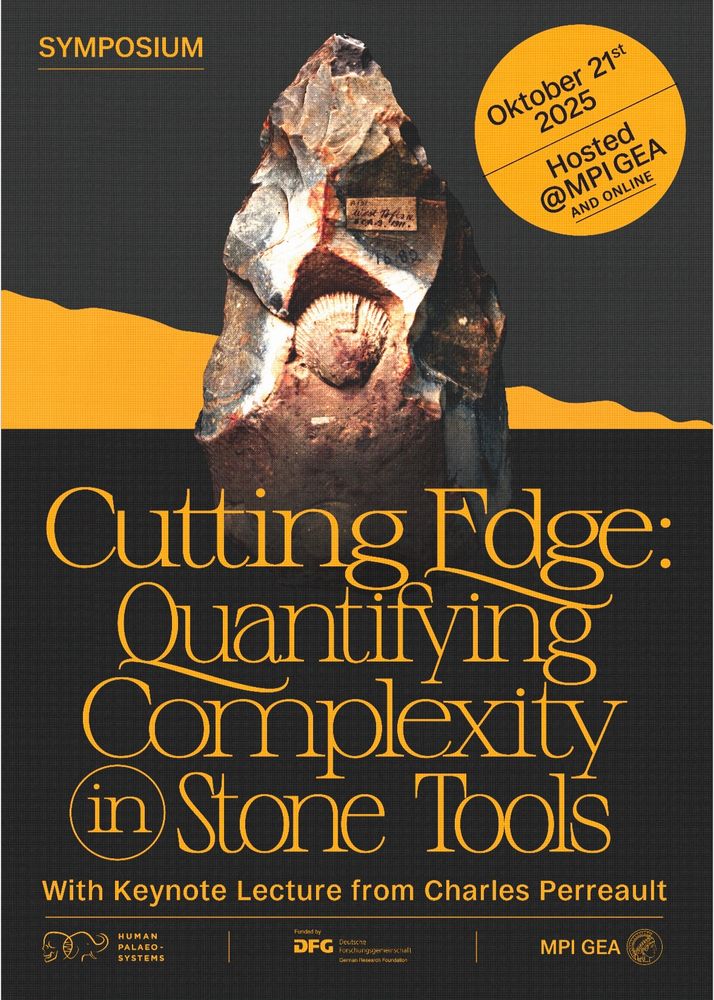
Join us at the MPI-GEA or online for a free symposium on Quantifying Complexity in Stone Tools on the 21st of October! 🪨
With a keynote lecture by Charles Perreault. Full speaker list will be released soon!
Secure your spot here: shh-cloud.gnz.mpg.de/index.php/ap...
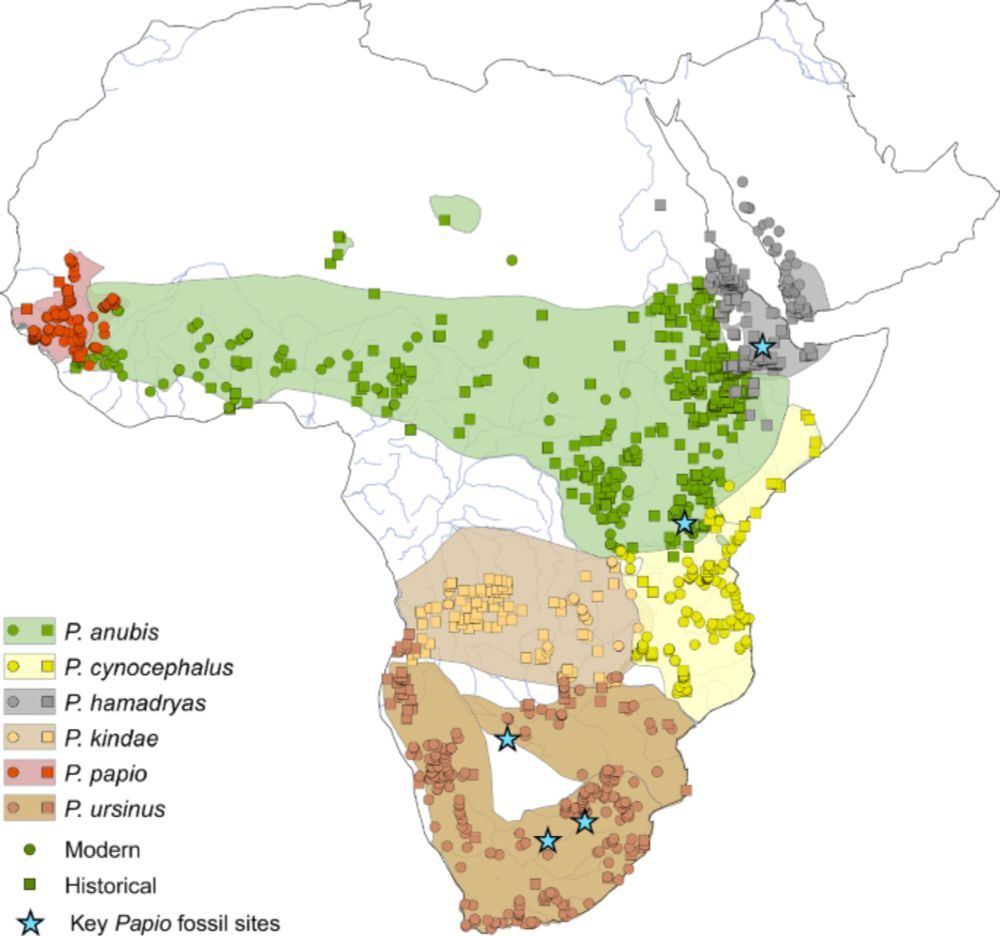
Hindcasted species distribution modelling of baboons illuminates potential refugia across Africa and Arabia, with predicted maxima and minima of habitable ranges pulsed by orbital precession and obliquity expressed within the last precessional cycle. www.nature.com/articles/s42...
10.07.2025 13:59 — 👍 9 🔁 4 💬 1 📌 0This project ended up taking the best part of 3 years 😅 Thank you very much to @margheritac17.bsky.social, @mikleonardi.bsky.social, @jblinkhorn.bsky.social, @elliescerri.bsky.social, Manuel Chevalier, Matt Grove, Andrea Pozzi and Andrea Manica from @eegcam.bsky.social for your hard work!!
10.07.2025 09:18 — 👍 3 🔁 1 💬 0 📌 0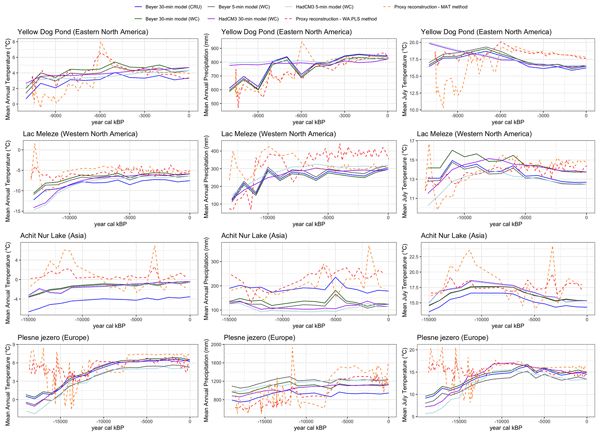
Very pleased to see our paper published online at Climate of the Past: cp.copernicus.org/articles/21/...
We present model-data comparisons of Late Quaternary climate across the Northern Hemisphere, showing that increasing model resolution has little net effect on coherence with pollen proxies 😊
New paper in collaboration with @lucytimbrell96.bsky.social and @jblinkhorn.bsky.social, with several of us involved (@mikleonardi.bsky.social @margheritac17.bsky.social @andreavpozzi.bsky.social) shows that downscaling palaeoclimate models doesn't necessarily improve coherence with proxy data.
10.07.2025 09:22 — 👍 8 🔁 5 💬 0 📌 0New paper out, in collaboration with @jblinkhorn.bsky.social @elliescerri.bsky.social and @lucytimbrell96.bsky.social
05.07.2025 19:50 — 👍 5 🔁 1 💬 0 📌 0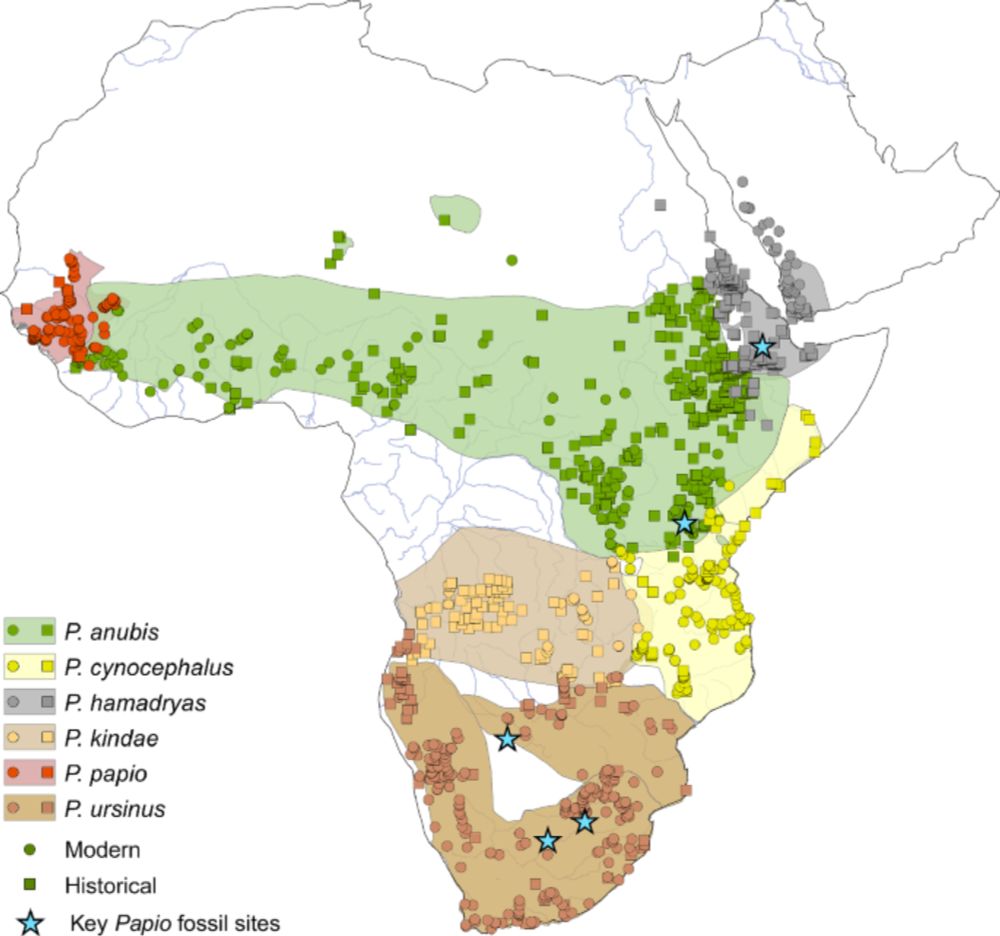
New paper alert! Led by @jblinkhorn.bsky.social, we look at refugia for baboons in the Pleistocene and Holocene, offering a potential analogue for early hominins where climatic tolerances are shared.
www.nature.com/articles/s42...
Here it is, our case study on how to combine a century of deep (and building) archaeological knowledge around prehistoric social traditions with the new and exciting aDNA data, to help avoid interpretive pitfalls.
I hope you all enjoy reading it as much as we enjoyed the process of writing it 🎁

Comparing the extent of human niche and malaria stability index through time a) Extent of the human niche (outlined in black) against the map of malaria stability index at 54, 16 and 8 kya; b) median of level of malaria stability index in the area of human range (dark orange line) and outside the area of human range (dark blue line), including the uncertainty (interquartile, colour in transparency around the darker lines that shows median values). We can see that the level of malaria in the human niche is consistently lower than the areas avoided by humans.
Malaria shaped human spatial organisation for the last 74 thousand years🏺🧪
Margherita Colucci, @ceciliapad.bsky.social, @elliescerri.bsky.social et al
www.biorxiv.org/content/10.1...
Humans avoided or unsuccessful in malaria hotspots. Effects of these choices shaped human demography for last 74 kya
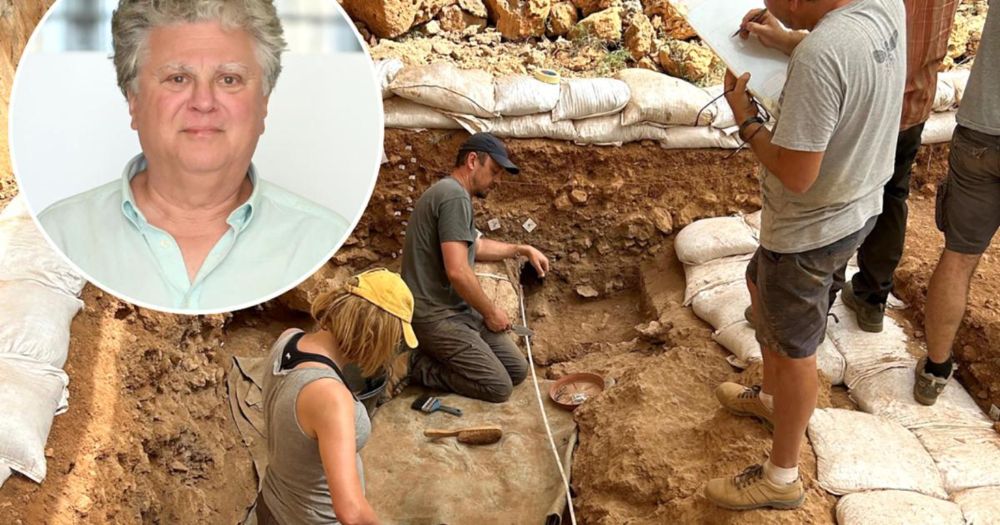
Nice coverage of some our ongoing work at Latnija and our Island Legacies conference last week timesofmalta.com/article/latn...
11.06.2025 16:17 — 👍 7 🔁 1 💬 0 📌 0
🚨 NEW preprint🚨 Our latest study @HPS MPI-GEA @elliescerri.bsky.social & @eegcam.bsky.social models #malaria risk over the past 74,000 years revealing its powerful role in shaping human habitat choice and dispersal since the late Pleistocene in sub-Saharan Africa 🦟🌍 www.biorxiv.org/content/10.1...
09.06.2025 16:13 — 👍 15 🔁 10 💬 2 📌 1Palaeo folks, I was speaking with the production team recently and they said they are keen to feature more palaeontology stories.
So if you are excavating/surveying this summer and think you might turn up something, drop them a line

🚨NEW PAPER from the @eegcam.bsky.social!🚨I have never been as proud of something as of the work that finally we can share today: www.biorxiv.org/content/10.1... - we show how a climatically driven Pan African meta population model explains our species genetic and morphological diversity 🧬💀
23.05.2025 12:50 — 👍 57 🔁 28 💬 4 📌 3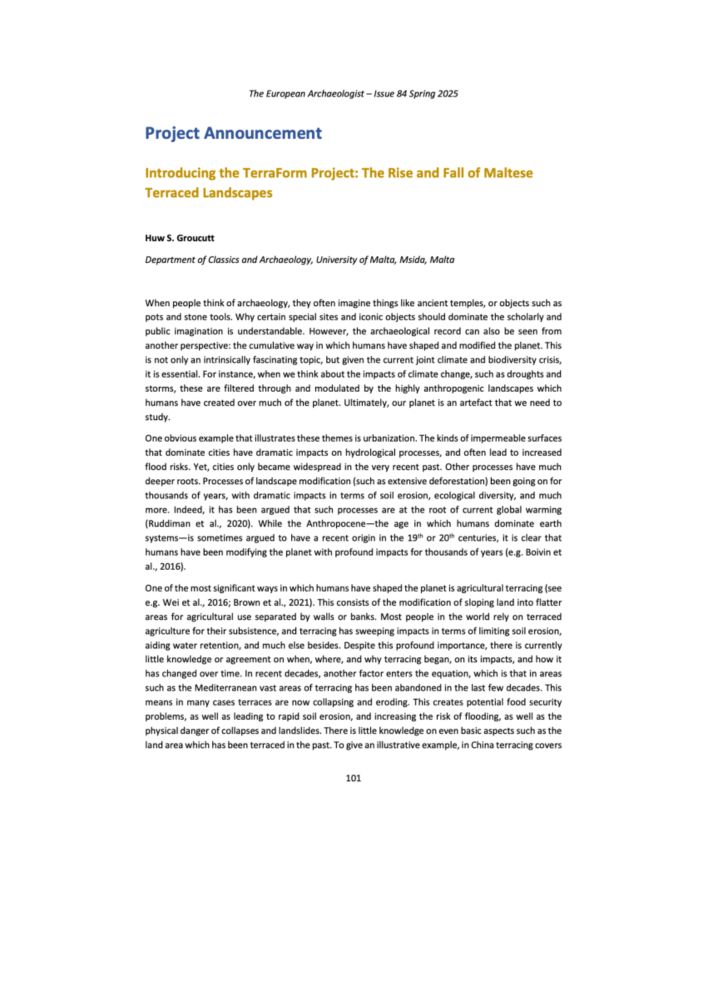
First publication for my recently started TerraForm project is out. A short overview and introduction published in The European Archaeologist (www.researchgate.net/publication/...).
15.05.2025 10:53 — 👍 7 🔁 2 💬 0 📌 0Our next MENDLS lecture is coming up next week and it's sure to be a great one. If you're in the Northwest, come and hear Prof Manica talking about the role of climate in human evolution.
06.05.2025 10:23 — 👍 4 🔁 1 💬 0 📌 1Really looking forward to this next Wednesday (14th May 2025)!
Anyone is welcome to join - registration is free and available here: forms.gle/9kdzpTbfMuDZ...
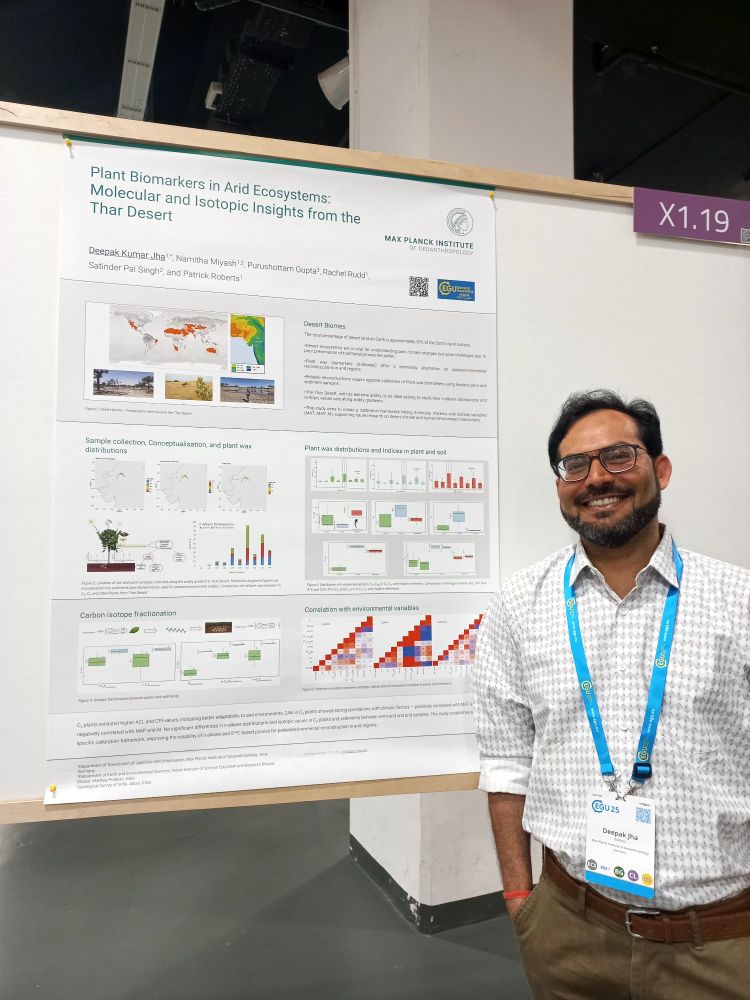
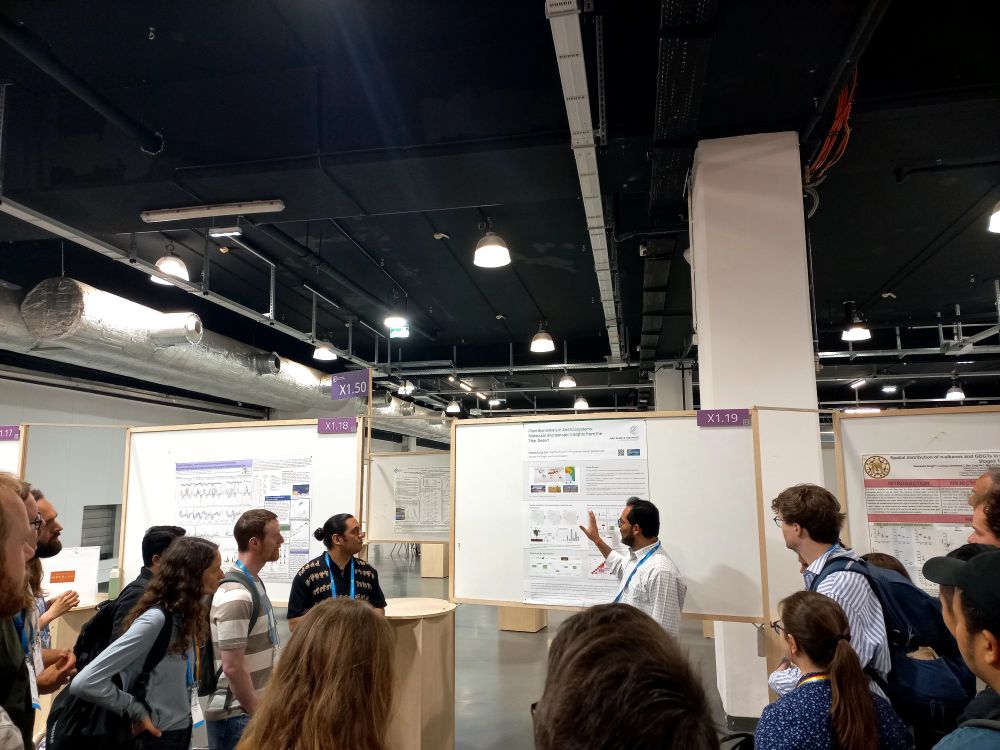
@deepakjha.bsky.social presenting CSIA of modern plants and sediments along an aridiy gradient in the Thar Desert at #EGU25
01.05.2025 10:32 — 👍 6 🔁 3 💬 0 📌 1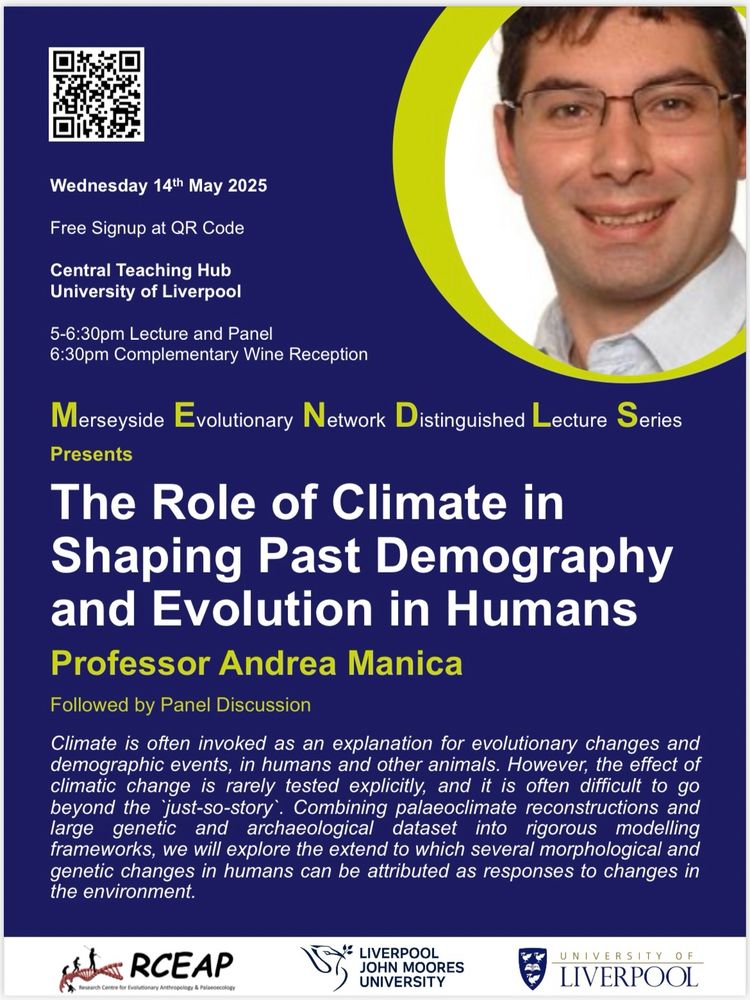
Looking forward to our next MENDLS talk on Wednesday 14th of May with Prof Andrea Manica of the University of Cambridge @eegcam.bsky.social
Join us in Liverpool! Sign up via the QR code below
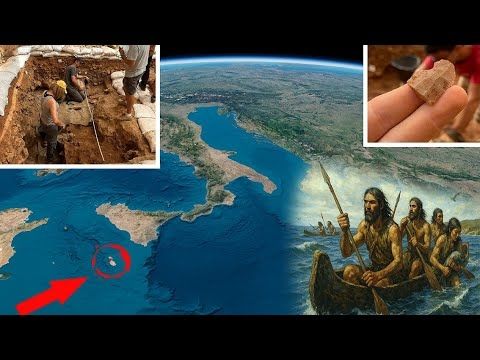
Livestream tomorrow at 5pm UK/noon EDT with Drs Eleanor Scerri (@elliescerri.bsky.social) and Huw Groucutt (@huwgroucutt.bsky.social) to chat about their recent paper that's been all over the news about Hunter gatherer occupation on Malta
www.youtube.com/live/ZGRjN20...

🚨New preprint!🚨"Sexual division of labour shapes hunter-gatherer spatial ranges". Following on the sexual division of labour theme, finally out our analyses on the lifetime spatial ranges of over 700 Mbendjele BaYaka 🤩
www.biorxiv.org/content/10.1...
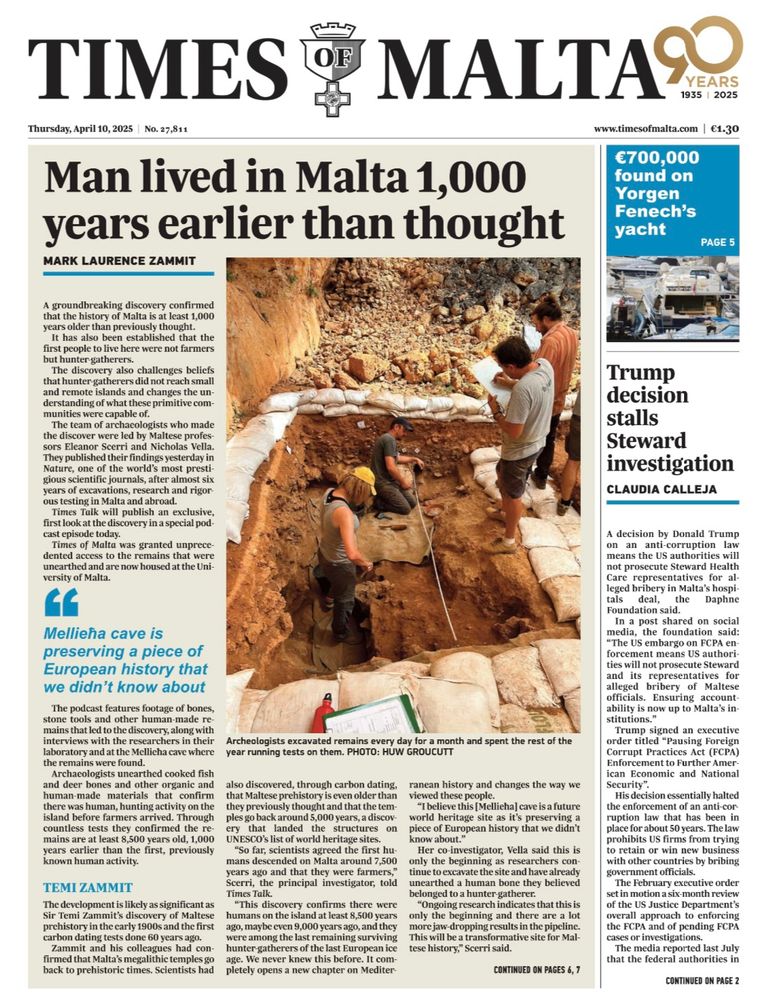
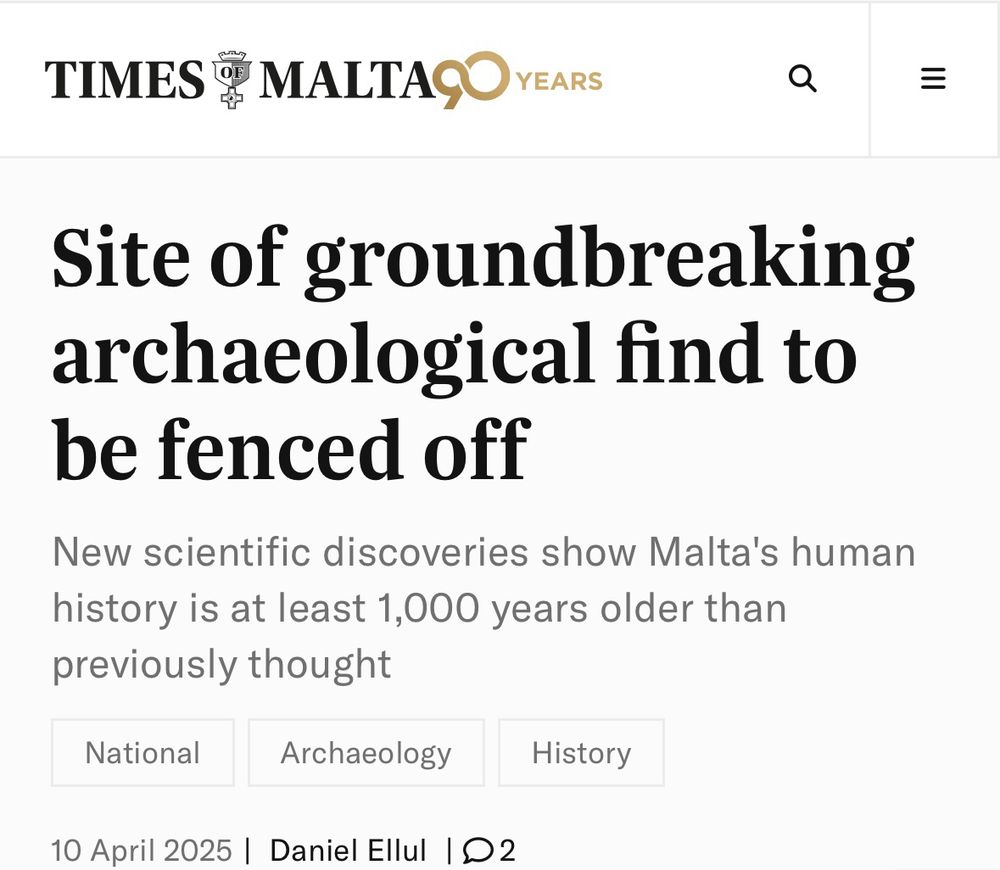
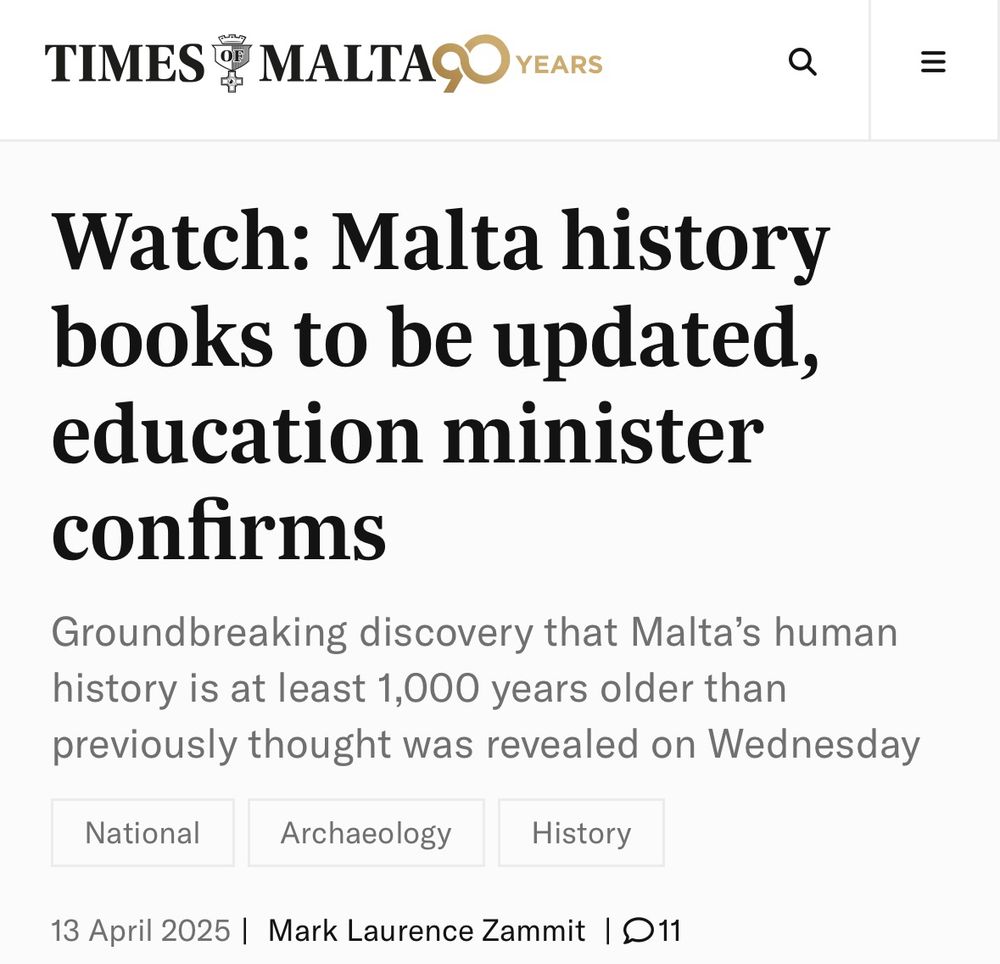
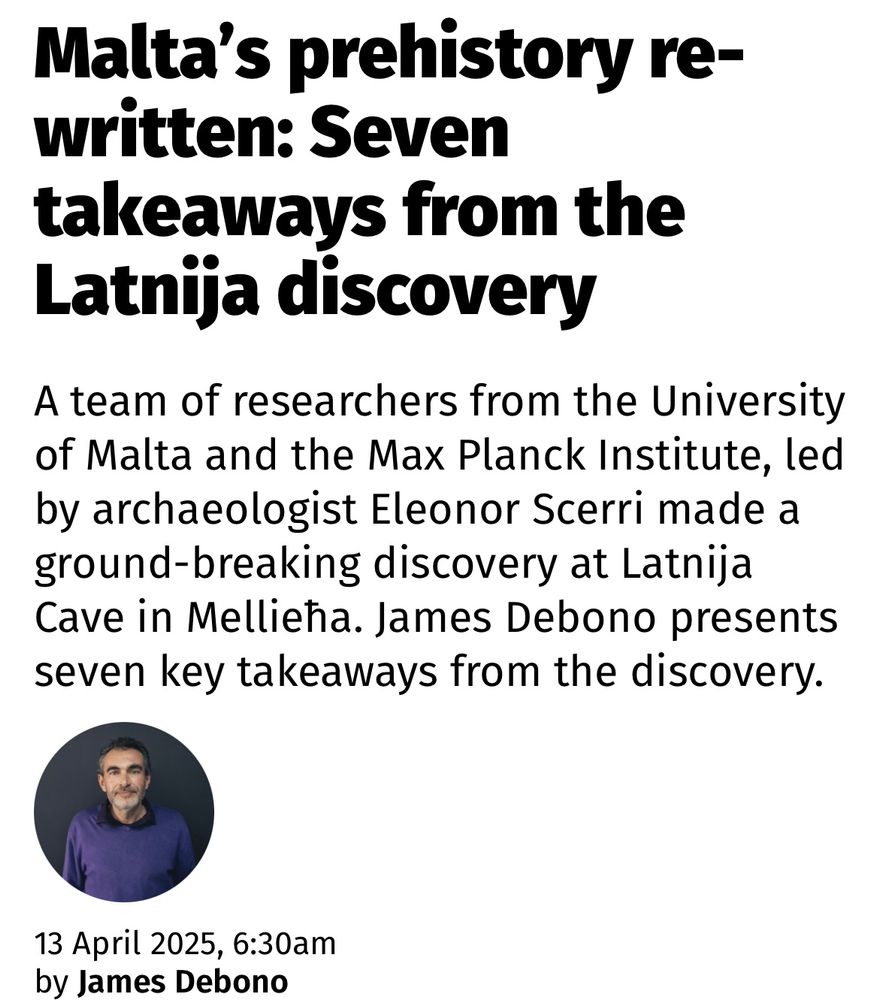
It’s been great to see all the excitement in Malta about our recent findings at Latnija.
Looking forward to the future at this incredible archaeological site!

Finally out 🥳: I've written and recorded a podcast episode with the amazing Karen Kramer for Sapiens Magazine on the origins and evolution of division of labour in hunter-gatherer societies, and its implications for undestanding (or misunderstanding) gender roles: open.spotify.com/episode/2ZGA...
15.04.2025 13:11 — 👍 25 🔁 9 💬 2 📌 1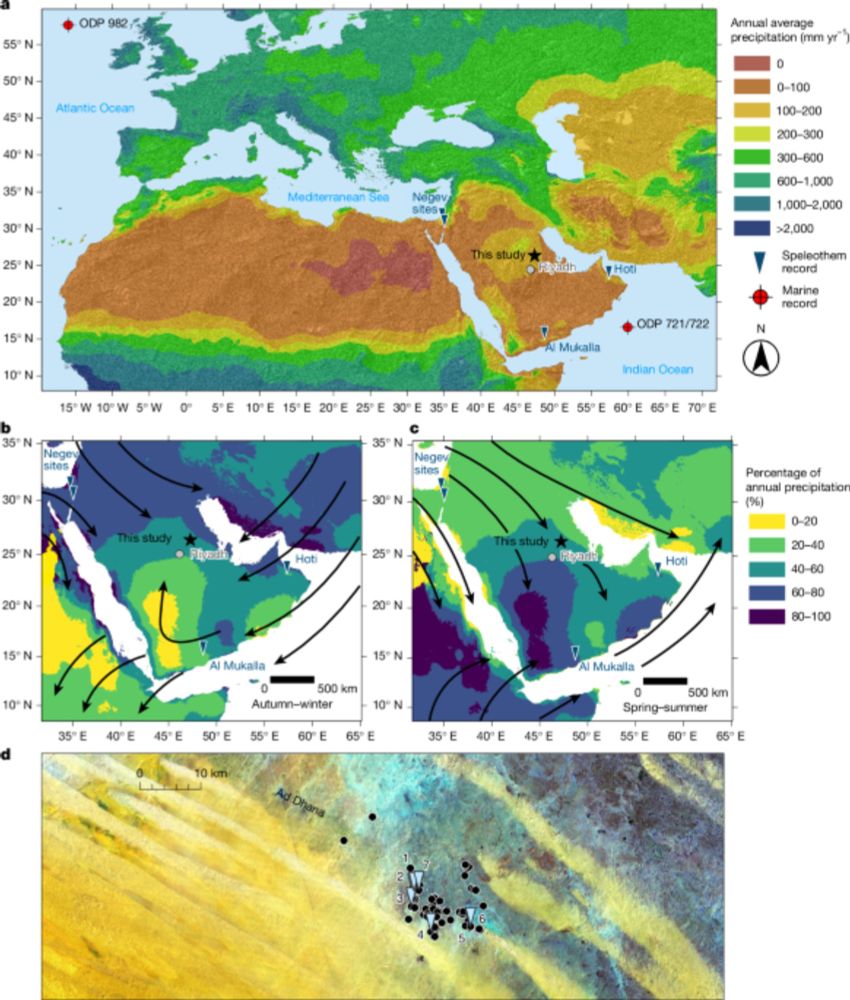
Our new paper just out in @nature.com
By analyzing speleothems we were able to reconstruct the palaeoclimate of northern Arabia over the past 8-million-years!
Work led by Monika Markowska (University of Northumbria)
www.nature.com/articles/s41...
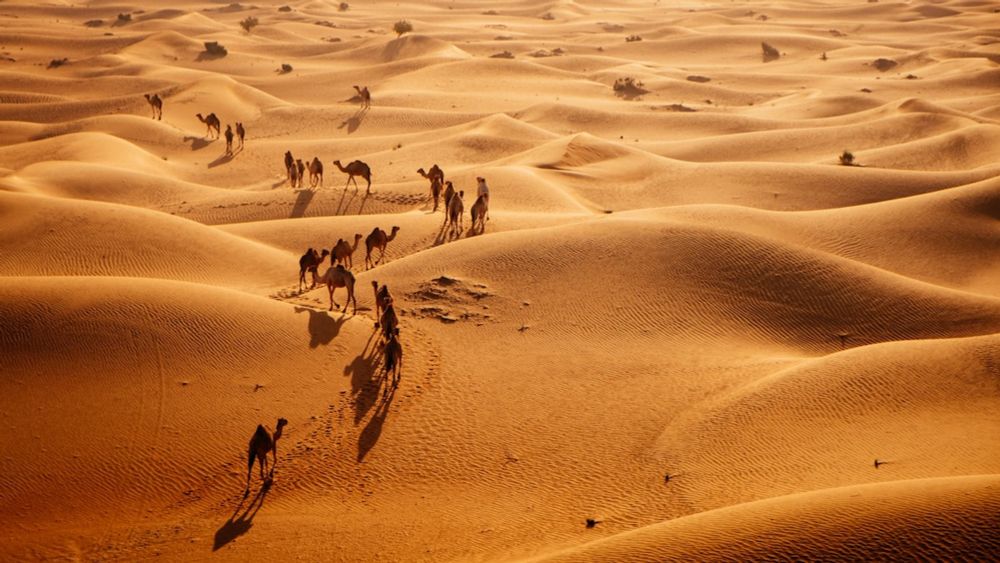
National Geographic piece on our latest research our in @nature.com where we document recurrent humid periods in Arabia over the past 8-million-years
www.nationalgeographic.com/environment/...
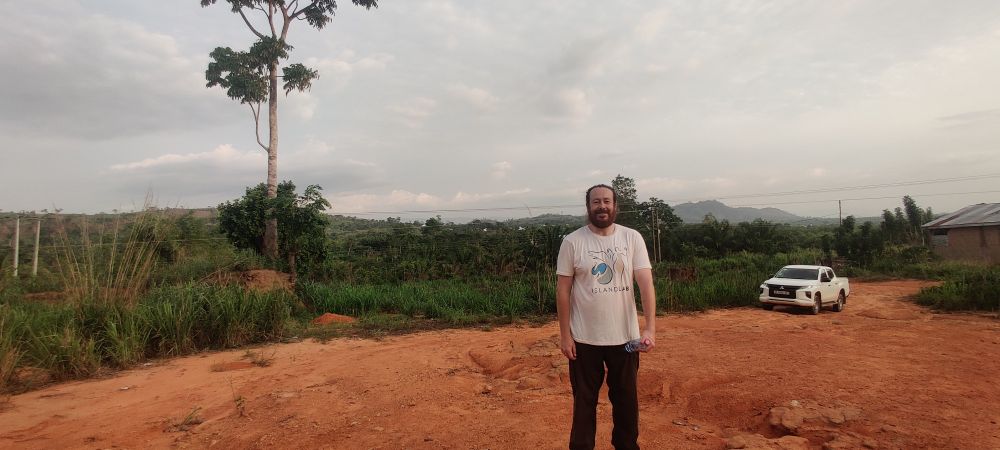
Feeling lucky to have played a part in two great teams both of which have papers out in Nature this afternoon - and where better to celebrate some fantastic work than by getting back out to the field for more
09.04.2025 18:16 — 👍 7 🔁 0 💬 0 📌 0(1/17) We are thrilled to see our new paper ‘Hunter-gatherer sea voyages extended to remotest Mediterranean islands’ published in Nature. www.nature.com/articles/s41...
09.04.2025 15:10 — 👍 50 🔁 20 💬 2 📌 2
Paper alert, @nature.com. Our study reveals 8 million years of #GreenArabia. We document environmental variability - ranging over the entire course of human evolution. Arabia is a key bridge at the cross-roads of continents. www.nature.com/articles/s41...
09.04.2025 15:00 — 👍 51 🔁 17 💬 2 📌 1